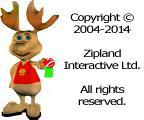Computer Based Child & Divorce Therapy
How can we find a common story-related denominator when in fact no two divorces are alike? People are different, relations between parents are different, relationships between children and their parents are different, as are the structure of the family, its members, etc.
The game interface, containing the Quest Journal, the crystals – representatives of the parents, and the dialogues attempt to offer an answer to both the common and the different.
The story tells of a prince whose island home experiences an earthquake that cut it into two pieces. The hero finds himself split, frustrated, feeling guilty and determined to join together the two sections of the island. He sets out on a journey in which he has to solve puzzles and dilemmas in order to achieve his goal.
On the way he acquires tools for coping with life, with feelings and with appropriate emotional responses as opposed to acting out. He gets perspective, looks inwards, finds humor even where there is pain and copes with the loss of his fantasy of successfully putting his island back together.
We chose to make no specific mention of the issue of child therapy and divorce in the framework of the game. Rather, we employ a simple metaphor similar to those related by children who have experienced divorce. They describe the experience of separation and change that transpires in their lives years after the divorce. [18,19]
The use of metaphors is an especially potent therapeutic tool [20,21] that works simultaneously on different areas of the brain. Repression, regression, externalized anger and denial usually accompany the emotional struggle [22], so that our assumption is that a direct game would likely arouse more antagonism and less willingness to play.
The game is ideal for divorce parenting and is suitable for boys and girls aged 9 to 12.
Studies show [23] that boys demonstrate more behavioral symptoms than girls but that the emotional distress is similar. Girls tend to relate more by withdrawal or behavior meant to please.
Age also plays a part in the form of reactions. Children in their latency stage will express tension in the form of aggression or withdrawal, while adolescents are more prone to act out their anger; to be judgmental and critical of one parent, to be sexually promiscuous or to take drugs.
In other words, the behavioral symptoms are different, but pain… is pain… is pain.
The writings in the journal that appears in the game interface make it possible to identify the individual changes from one case to another.
In short, Earthquake in Zipland enables the child:
- To deal with the separation and the fantasy of bringing the parents back together again.
- To experience and express painful repressed symptoms, frustration, anger, sadness and hope, that accompany the experience of grappling with the divorce and thus to enable desensitization of the pain.
- To ask questions and look for solutions in situations that seems hopeless.
To receive feedback from figures that are metaphors for parents, psychologist, and philosopher, in order to deal better with the experience of loss and open the way to the mourning process. - To identify with situations in the game that parallel the emotional situations he is struggling with in his daily life, while distancing him from the experience so that he can touch on things he usually tends to ignore.
- To offer an opportunity and encourage the inclusion of people from the child’s world in the game, thus providing opportunities for conversation with parents or therapist, depending on whom he is playing with.
Go back to “Earthquake in Zipland-forParents”





